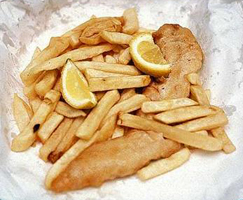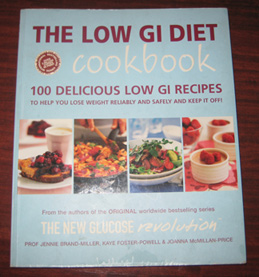 How do you feel after eating deep fried fish and chips or a few pieces of KFC? Fantastic? Refreshed? On top of the world?
How do you feel after eating deep fried fish and chips or a few pieces of KFC? Fantastic? Refreshed? On top of the world?
I don’t think so.
Most of us are all too familiar with the ‘post fish and chip’ or ‘KFC’ effect. Speaking from my own experience, I used to feel so good as I gobbled down some fish and chips but shortly afterwards, I was always left feeling sluggish, grumpy and lethargic (with a dash of the guilts to top it all off!).
I could never quite understand why my mood used to fluctuate so much throughout the day. It wasn’t until I discovered the ‘low GI’ diet that I realised that what I was putting into my mouth was directly correlated with my mood.
I came to the following realisation:
Healthy + natural + low GI foods -> Health and happy Jane
Fatty + sugary + highly processed + high GI foods -> Grumpy, depressed Jane
So what exactly is the low GI diet?
It’s all to do with carbs and your blood sugar levels but it’s got nothing to do with fad diets such as the Atkins. The GI (glycemic index) is a physiologically based measure of the effect of carbohydrates on blood glucose levels.
Jennie Brand Miller (Professor of Human Nutrition at the University of Sydney) describes the low GI diet as follows:
“[The low GI diet is] a carbohydrate controlled diet because it is based on choosing low GI carbs that are slowly digested and absorbed, producing only gentle rises in your blood glucose and insulin levels”.
Carbs that break down rapidly during digestion, releasing glucose quickly into your blood have high GI values and carbs that break down slowly have low GI values.
So you may be thinking ‘Ok, great, but so what? What does all this mean for me and my body?’.
The benefits of a low GI diet
If you can get beyond the technical terms (and Jennie Brand Miller does a great job of keeping them to a minimum in her books), I highly recommend you give the low GI diet a try for at least 1 week so you can see why this diet is so fantastic.
Firstly, you will find that you feel fuller for longer (so when you’re in class or in the office working in silence with all your classmates or colleagues, you won’t have to worry about your stomach rumbling loudly) but most importantly by eating low GI foods your body isn’t going on a constant roller-coaster ride of feeling on a high and then suddenly feeling fatigued and hungry again (i.e. the ‘fish and chip/KFC’ effect I discussed earlier).
On a low GI diet, you’ll find you can think more clearly which will allow you to be more productive and get the most out of your day. It also reduces risks of developing diabetes, heart disease and certain types of cancer.
How can you tell if your food is low GI or high GI?
That’s where ‘The low GI shoppers guide’ and/or the GI database comes in handy. These will tell you what foods are low GI (values of 55 or less), medium GI (56 to 69) and high GI (70 or more).
Just from flipping through the shoppers guide for a minute, I can see that some high GI foods to watch out for are potatoes (GI values range from 65 to 101), canned lychees (79) and gluten free products. McDonald’s Deli Choice items such as the chicken tandoori multigrain and white rolls are relatively high (67 and 78 respectively) as well.
I also highly recommend the cookbooks ‘The low GI diet cookbook’ and ‘The low GI vegetarian cookbook’. These are two of the best cookbooks I have ever used. So many delicious, nutritious recipes are contained in these books and the pictures that go with each recipe look so good that you actually feel inspired to cook!
So the next time you find yourself craving some fish and chips for dinner, ask yourself the following question:
‘Is this food going to leave me feeling clear headed, energized and healthy?’
If the answer is no, make sure you avoid the fish and chip shop at all costs!
Again, my advice to you is not to get bogged down with the GI values. Start by purchasing one of Jennie Brand Miller’s beautifully designed low GI cookbooks or visit one of the low GI diet websites below. Try cooking a simple low GI meal to begin with. Perhaps you could start with a tasty low GI smoothy?
Let me know how you go and feel!
Useful low GI resources
The official GI website : A website by the University of Sydney. Contains a comprehensive database, lots of useful information and you can also purchase books from this site that are suited to where you live.
Low GI iPhone application: I don’t have an iPhone, so can’t say I have used this application but I thought this looked really interesting and potentially very useful for iPhone users.
Low GI Recipes : Several easy to make low GI recipes.
